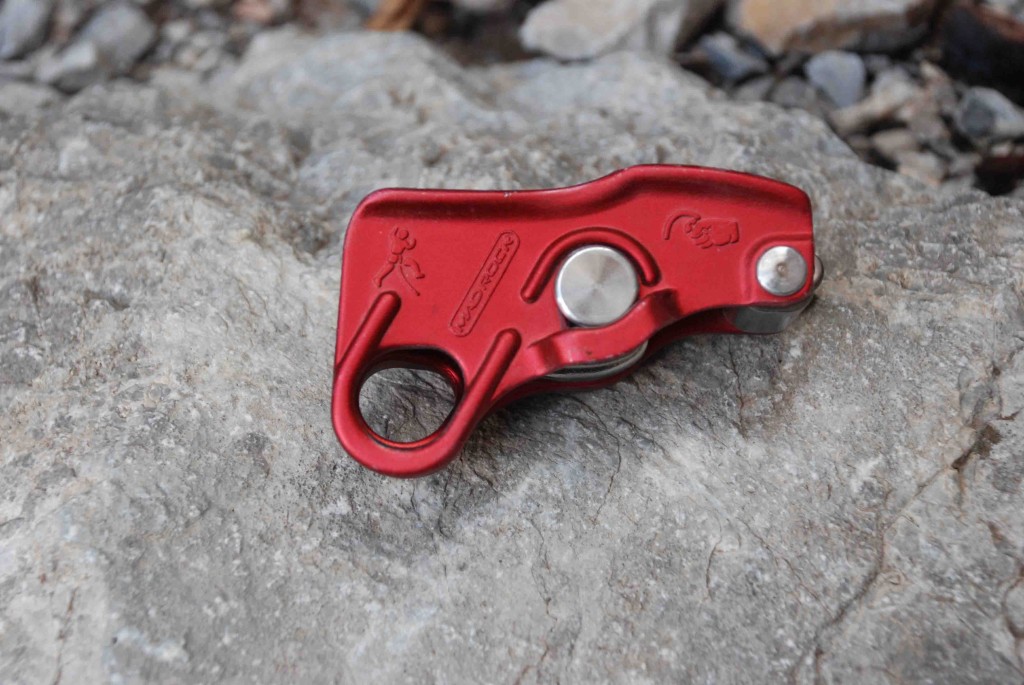Mad Rock Lifeguard Review
Our Verdict
Our Analysis and Test Results
The Mad Rock Lifeguard is made entirely of aircraft-grade hot-forged aluminum and stainless steel. No plastic on this one! It can accommodate ropes from 8.9 to 11mm in diameter.
Use this information to aid in a purchasing decision, not as instruction. For recommended usage, check out this short video made by MadRock.
Performance Comparison
Catch/Bite
We felt like this device mostly acted like other assisted braking devices in the catch department (locking off quickly and not needing as much force to hold on to the rope as you do with a tube-style device). We knocked it down a few points though because while the catch is similar, the “bite” is not. This unit worked well when top roping most adults over 100 pounds, but when we tried belaying children with it the cam would not engage fully. There's no minimum rating (to our knowledge) for cam engagement in belay devices — usually it's the breaking force we are worried about — but in this case, we were concerned with the lack of camming action. This might also be an issue for lighter adults in situations where there is a lot of rope drag that reduces the weight of the climber being held by the device.
Lowering/Rappelling
The Lifeguard did not lower as smoothly as some of the tube-style devices we have reviewed, and it felt jerkier than the other assisted braking devices as well. Some might appreciate the metal handle though, which inspires slightly more confidence than the plastic handles found on competitors — not that we've ever had one break on us though!
Feeding Slack
When it comes to feeding slack, we weren't that impressed with the action on the Lifeguard. Mad Rock recommends the classic tuber-style lead belay (one hand pulling the rope up out of the device and the brake hand pushing the rope in, shown in the video linked above), and this works for paying out small amounts of slack. When your partner goes to clip and you need two large arm-lengths, it did tend to lock up on us though. For those situations, we preferred to use the typical GriGri belay style, but the action there wasn't as smooth as the GriGri either.
We think the difference is because the rope is enclosed inside the GriGri and the track helps it feed smoothly, whereas there is no bottom track for the rope in the Lifeguard. Also note that some of our big-handed male testers found this device uncomfortably small to use, but those with smaller hands might prefer it over the larger GriGri.
Weight/Bulk
Here is one area where the Lifeguard beats out the GriGri. It's not that much lighter, but it is certainly more compact.
Auto Block (resistance belaying a second)
The Lifeguard provided more resistance in auto-block mode (when belaying off the anchor) than the GriGri, but not as much as the auto-blocking tube-style devices. This concurs with our findings about pulling slack through the device; it is just not as smooth a pull as the GriGri.
Value
The Lifeguard retails for a little bit cheaper than the GriGri and significantly less than the GirGri+. While we didn't find ourselves instantly reaching for this device when given a chance, if you are looking for an upgrade to your tube-style device but haven't been a fan of Petzl's assisted braking devices, this might be what you are looking for.
Conclusion
The Mad Rock Lifeguard is a compact belay device that does fill a niche need for those who prefer to belay with an assisted braking device no matter the situation but want something a little smaller for long routes.










